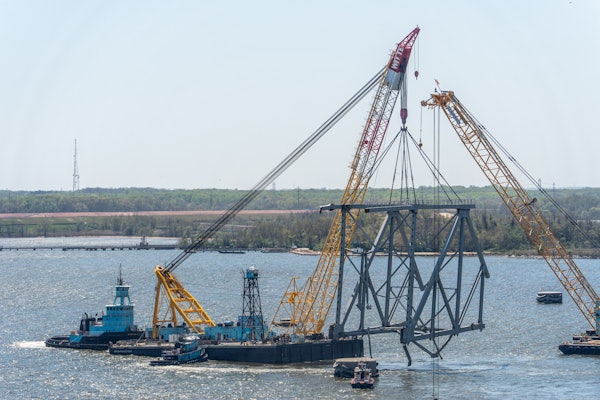 Doro o do suru ka
Doro o do suru ka
hile Washington debates reauthorization and which model is the best to lead American infrastructure and road building into the future, consider Japan.
In their book “Doro o do suru ka” (“What to do about the roads”), lawyer Takayoshi Igarashi and journalist Akio Ogawa, writing about Japan’s highway system, offer us an interesting comparison. A review of the book in the Japan Times by Colin P.A. Jones, a professor at Doshisha University Law School in Kyoto, ran under the headline “Japan’s Many Roads to Ruin.”
The two authors “paint a bleak picture of how the ‘road tribes’ – the impenetrable scrum of bureaucrats, politicians and industry that benefit from an ever-expanding program of road construction – are literally paving the road to national ruin,” wrote Jones.
In an irony that surely must make us smile, Jones points out that last year the Japanese parliament reauthorized a gas tax. Despite heavy pressure to use the tax money for the general fund, the tax remained earmarked entirely for roads. And in Japan, said Jones, that was not necessarily a good thing. After victory over Japan in WWII, America, seeking to help the country rebuild, ordered the Japanese to produce a five year roadbuilding plan. They have been producing them ever since, each bigger than its predecessor, according to Jones. Somehow approval for the plans comes not from the elected parliament but from a cabinet minister. So in effect that minister’s bureaucrats can build pretty much whatever they like, according to the law prof.
“The results have been a disaster,” says Jones. “Certainly, Japan has a lot of roads, four to five times the number of any other Group of Seven country when measured by kilometers of road to useable land. The trouble is, a lot of these roads are in places where they are not needed. The country has an impressive network of toll roads that will never be profitable. It has expressways that connect industrial parks to ports and airports that industries do not want to use, and monumental bridges that suck people and money out of rural town rather than reviving them.”
Airports to Nowhere
An advisory issued by the inspector-general of the Transportation Department has highlighted the uncertainty that has plagued some ARRA stimulus projects.
The August advisory said that the Federal Aviation Administration had awarded $38.5 million to six low-priority airport projects that had dubious economic merit.
The advisory said the FAA selected more than 50 projects falling below its National Priority Rating (NPR) threshold of 62, “raising concerns about whether the agency’s process resulted in funding the highest priority ARRA projects. Moreover, based on our preliminary review of FAA project justifications and other information, we identified six low scoring projects for which the economic merit—a key ARRA requirement—may be questionable.”
The FAA awarded Akiachak and Ouzinkie, Alaska, $13.9 million and $14.7 million, respectively, to replace their airports, according to the advisory. Each project had an NPR score of 40. Akiachak, which has about 659 residents, has a seaplane base, an airfield with a gravel runway, and is within seven miles of two other airfields. Akiachak is also 14 nautical miles from Bethel, which has Alaska’s
fourth busiest airport. In summer, residents travel the river to Bethel by boat; in winter, the frozen river becomes a highway. Ouzinkie has about 167 residents. In addition to Ouzinkie’s gravel airstrip, the village has a float plane landing area at Ouzinkie Harbor. Barges provide cargo delivery from Kodiak, 10 miles away. Akiachak’s airport averages 57 flights a week; Ouzinkie’s averages 42 flights a month.
The other four airports do not provide commercial passenger service, have limited flight operations, and received NPR scores ranging from 43 to 50, said the advisory.
“These projects include $4.8 million for a new taxiway at Findlay Airport, Ohio; $2.2 million for a runway extension at Wilbur Airport, Washington; $2 million for an apron at Warrensburg-Skyhaven Airport, Missouri; and $909,806 to design (not construct) a new runway at an airpark near Dover, Delaware. According to FAA, the Dover project was chosen because it was the state’s only project that was ‘ready to go.’”
Bug your Congressman
The American Road & Transportation Builders Association says there is a need for intense pressure on Congress to get a new six-year reauthorization and avoid an 18 month delay. How to do it? This is the ARTBA way:
You can reach members of Congress and their staffs at their state and district offices, or in their Washington, D.C., offices by calling the ARTBA Action Hotline at 888-448-2782. Deliver the following messages:
22,000 Americans die because of deficient roadways each year. That’s 22,000 reasons why Congress should complete action on a multi-year bill, either by the end 2009 or in early 2010.
Action on a bill is a critical follow up to the stimulus law and will help promote job creation and economic recovery. It is the real “second stimulus.”
Urge them to speak with their colleagues on the House Ways & Means and Senate Finance Committees and make generating sufficient revenue for a $450 billion bill a priority.
Tell them about your company’s personal story, and how inaction and delay will lead to layoffs and deferred purchases.








